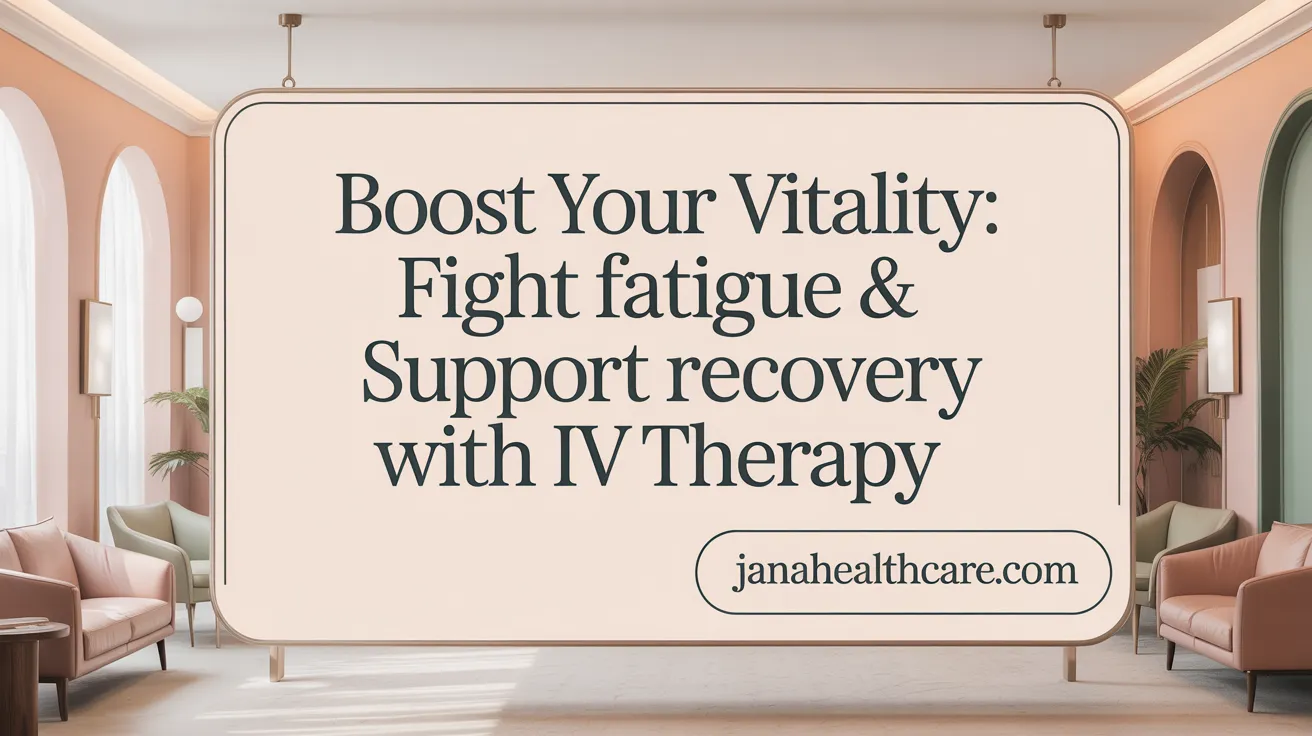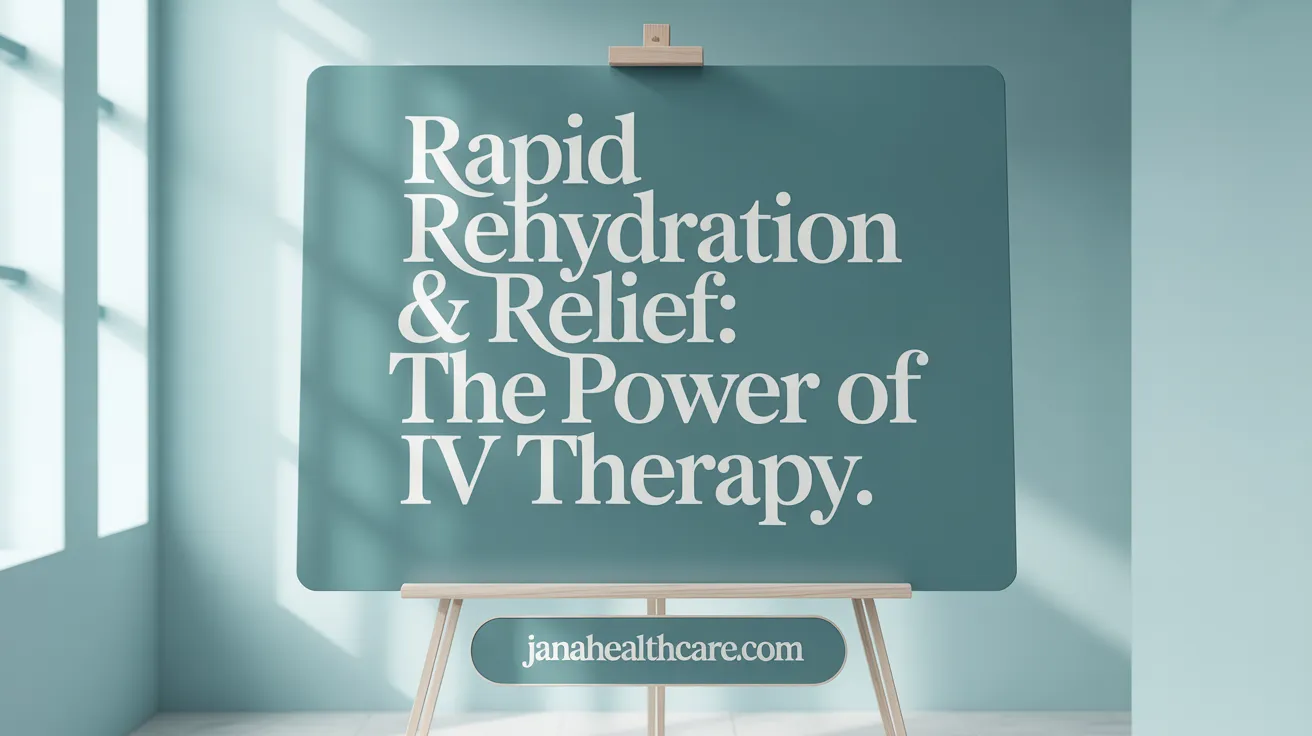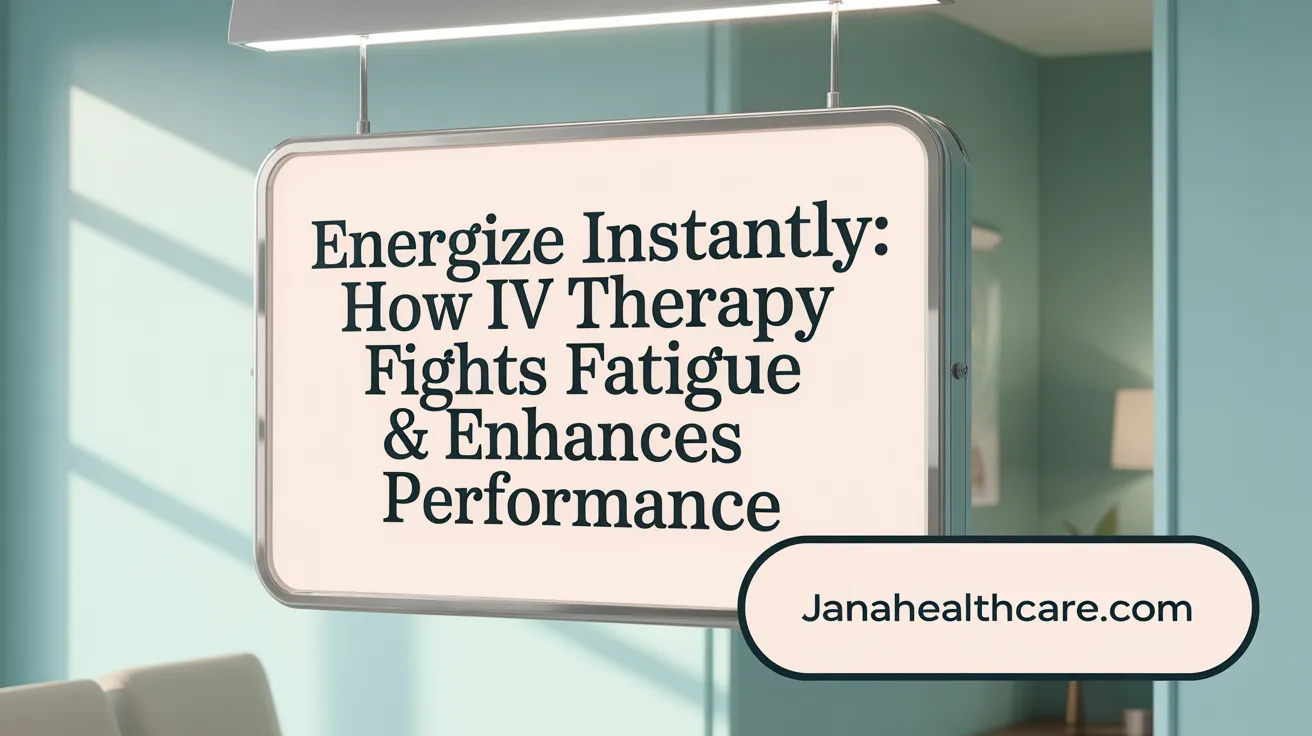Understanding IV Therapy and Its Rising Popularity
Intravenous (IV) therapy, long established in medical settings for treating dehydration and nutrient deficiencies, has gained popularity beyond hospitals into wellness clinics and lifestyle markets. This method delivers fluids, vitamins, and minerals directly into the bloodstream, bypassing the digestive system for rapid absorption and potentially quicker effects. This article explores the health benefits of IV therapy, including fighting fatigue and dehydration, speeding recovery, and supporting immune function, while also addressing how it works, its clinical and wellness applications, safety considerations, and scientific evidence backing its use.
How IV Therapy Works: A Direct Route to Rapid Absorption

How does IV therapy work and what are the typical procedures involved?
IV therapy functions by delivering fluids, electrolytes, medications, or nutrients directly into a patient's bloodstream through a vein. This direct approach ensures that the substances are absorbed quickly, leading to a rapid onset of therapeutic effects. It bypasses the digestive system entirely, making it especially useful in situations where normal absorption might be impaired or immediate action is needed. For more detail, see How IV therapy works and Intravenous therapy overview.
The typical procedure begins with a healthcare professional assessing the patient's needs and selecting an appropriate vein, commonly in the arm or hand. Once the site is disinfected, a sterile IV catheter or needle is inserted into the vein. This process requires skill to minimize discomfort and prevent complications. Learn about the IV fluid administration procedure and IV therapy nursing skills and procedures.
The healthcare provider then attaches tubing connected to an IV bag that contains the desired fluids, vitamins, or medications. The flow rate is carefully set, often with the assistance of an infusion pump, to control the amount and speed of infusion. During the process, the professional monitors the IV site closely for signs of issues such as infiltration (fluid leaking into surrounding tissue) or infection. For details, refer to Types of IV fluids and monitoring and Complications of IV therapy.
In some cases, secondary infusions like IV piggybacks are used to administer medications intermittently alongside primary fluids. This setup allows for flexibility in treatment and precise dosing. Throughout the session, continuous observation ensures the safety and effectiveness of the therapy. More about Secondary IV infusion and piggyback administration.
Overall, IV therapy is a straightforward yet sophisticated process that requires proper technique and ongoing supervision to maximize benefits and minimize risks. For comprehensive insights, see IV therapy uses, benefits, and risks.
Key Health Benefits of IV Therapy: Fighting Fatigue, Dehydration, and Supporting Recovery

What are the main health benefits of IV therapy?
IV therapy provides a range of health advantages by directly delivering fluids, vitamins, and minerals into the bloodstream. This method allows for rapid absorption and targeted treatment, bypassing the digestive system, which can be beneficial for individuals with malabsorption issues or chronic illnesses.
One of the primary benefits is rapid hydration and electrolyte replenishment. IV fluids quickly restore lost fluids and vital minerals like sodium, potassium, and magnesium, which are essential for muscle function, nerve signaling, and maintaining blood pressure. This quick rehydration can alleviate symptoms of dehydration such as weakness, dizziness, and headaches, and is particularly useful in emergencies or severe dehydration cases.
In addition, IV therapy enhances nutrient delivery, including high doses of vitamins such as B12 and C, antioxidants like glutathione, and amino acids. These nutrients can improve energy levels, reduce fatigue, and support overall wellness. Many report feeling an immediate boost in vitality and mental clarity after treatment.
Beyond physical hydration and nutrition, IV therapy is known to support the immune system. It supplies essential nutrients that promote white blood cell production, antioxidant activity, and detoxification processes, which can help the body fight infections and recover faster from illness or intense physical activity.
Moreover, IV therapy aids in recovery and healing. Athletes and physically active individuals use it to replenish electrolytes and support muscle repair. Patients recovering from surgery or illness benefit from faster tissue repair, reduced inflammation, and improved nutrient absorption, helping to shorten recovery times.
While the scientific evidence supporting all these benefits in healthy individuals remains limited and mostly anecdotal, IV therapy is an effective medical treatment for dehydration and nutrient deficiencies. It is also increasingly used in wellness settings for boosting energy, immunity, skin health, and overall vitality. Nonetheless, it is crucial to seek professional guidance and consider potential risks such as infection or nutrient overload.
Clinical and Wellness Applications: From Medical Necessity to Lifestyle Enhancement
 Intravenous (IV) therapy has diverse applications, spanning both essential medical treatments and wellness practices. Medically, it is crucial in addressing dehydration and nutrient deficiencies, especially in patients with conditions like malabsorption syndromes, post-surgical recovery, and chronic illnesses. When the digestive system cannot efficiently absorb nutrients, IV therapy bypasses the gastrointestinal tract, delivering vitamins, minerals, and fluids directly into the bloodstream for rapid and complete uptake.
Intravenous (IV) therapy has diverse applications, spanning both essential medical treatments and wellness practices. Medically, it is crucial in addressing dehydration and nutrient deficiencies, especially in patients with conditions like malabsorption syndromes, post-surgical recovery, and chronic illnesses. When the digestive system cannot efficiently absorb nutrients, IV therapy bypasses the gastrointestinal tract, delivering vitamins, minerals, and fluids directly into the bloodstream for rapid and complete uptake.
In acute clinical settings, IV therapy is used to quickly rehydrate patients suffering from severe dehydration due to illness, heat exposure, or injury. It also plays a vital role in restoring blood volume after significant blood loss, supporting electrolyte balance, and administering medications such as antibiotics, pain relievers, or specialized solutions like total parenteral nutrition (TPN). For example, high-dose IV vitamin C is utilized in certain cancer treatments to bolster immune response, although ongoing research continues to evaluate its broader efficacy.
Beyond medical necessity, IV therapy has gained popularity in wellness and lifestyle contexts. It is often sought for boosting energy, reducing fatigue, and enhancing skin health through antioxidant delivery. Active individuals and athletes use IV infusions post-exercise to accelerate recovery, replenish electrolytes, and improve performance. Treatments like Myers’ Cocktail—containing a blend of B vitamins, vitamin C, magnesium, and glutathione—are commonly administered at wellness clinics for their purported ability to detoxify, slow aging, and improve overall vitality.
Additionally, IV therapy is popular for hangover relief, providing rapid hydration and nutrients to alleviate symptoms such as headache and fatigue. Although many wellness claims lack extensive scientific validation, those administered in properly regulated environments have shown benefits like improved hydration, immune support, and quicker recuperation (IV therapy benefits overview).
Overall, the applications of IV vitamin therapy encompass critical health interventions and elective wellness procedures. When administered by trained healthcare professionals, it offers a tailored approach for improving hydration, recovering from illness, and supporting general well-being. However, it remains essential to differentiate evidence-based medical uses from marketing claims for cosmetic or lifestyle enhancement, and users should consider safety, necessity, and scientific support (Mayo Clinic on IV vitamin therapy risks and benefits).
IV Hydration: Effectiveness in Treating Dehydration and Symptom Relief

How effective is IV hydration in treating dehydration and relieving its symptoms?
IV hydration is considered one of the most effective treatments for dehydration, particularly in severe cases caused by illness, heat exhaustion, or dehydration from physical exertion. It works by rapidly delivering fluids and electrolytes directly into the bloodstream, bypassing the digestive system for quick absorption. This immediacy helps in quickly restoring the body's balance of water and essential minerals, leading to rapid symptom relief.
Many patients experience noticeable improvements within minutes to an hour after infusion. Common symptoms alleviated include dizziness, dry mouth, weakness, headache, and fatigue. In cases of serious dehydration, IV therapy can prevent complications such as low blood pressure, impaired organ function, and even shock.
Clinically, IV hydration is typically reserved for moderate to severe dehydration or when oral rehydration is ineffective or impossible, such as in patients with nausea, vomiting, or altered consciousness. Emergency settings frequently utilize IV hydration to stabilize patients swiftly.
However, while highly effective, IV therapy requires careful application by trained healthcare professionals. It involves potential risks such as infection, vein damage, or fluid overload if not properly managed. Guidelines emphasize thorough patient assessment to ensure suitability before administering IV fluids, and ongoing monitoring during treatment.
In summary, when appropriately administered, IV hydration is a proven and rapid method to treat dehydration and alleviate its burdensome symptoms, making it an essential tool in medical settings for urgent and severe cases.
Boosting Energy and Combating Fatigue with IV Therapy

How effective is IV therapy for boosting energy levels and alleviating fatigue?
IV therapy can be quite effective at increasing energy and reducing feelings of exhaustion by directly delivering vital nutrients into the bloodstream. This bypasses the digestive system, ensuring 100% absorption, which allows for rapid replenishment of essential vitamins and minerals such as B vitamins, vitamin C, electrolytes, and antioxidants. Many people report an immediate boost in energy, mental clarity, and mood shortly after treatment, with benefits often lasting from several days to weeks (IV vitamin therapy benefits, IV therapy for energy and wellness, IV Therapy for Fatigue).
Recipients of IV therapy often notice improvements in symptoms related to nutritional deficiencies, dehydration, or exertion. It is especially popular among athletes, busy professionals, and those recovering from illness or stress, as it enhances both physical performance and recovery (IV therapy for athlete recovery, IV therapy benefits, Vitamin IV therapy overview).
Moreover, IV therapy supports cognitive function and emotional well-being, promoting better focus, reduced brain fog, and a more positive mood. These effects can help individuals better manage daily stress, workload, and physical activity (IV vitamin therapy benefits, Nutrient delivery via IV).
However, while numerous users and some clinical observations report these benefits, scientific studies on the long-term or consistent effects of IV therapy are limited. Most evidence remains anecdotal, and further research is needed to confirm its sustained efficacy (scientific evidence on IV vitamin therapy, IV vitamin therapy overview).
In summary, IV therapy offers a fast, targeted approach to boost energy and fight fatigue, making it a popular choice for immediate revitalization. Nonetheless, users should consider that optimal health is best supported by a balanced diet, regular exercise, and good sleep, with IV therapy serving as an adjunct rather than a replacement (Medical recommendations for IV therapy, recommended health strategies).
Safety, Risks, and Considerations in IV Therapy Use
What safety considerations, disadvantages, and potential risks are associated with IV therapy?
IV therapy, when administered properly by trained healthcare professionals, is generally safe and effective for rapid rehydration, nutrient delivery, and medical treatment. However, it does come with certain safety concerns that patients should be aware of.
One of the primary risks is infection. Since the procedure involves inserting a needle or cannula into a vein, there is a possibility of bacteria entering the bloodstream if strict sterile techniques are not followed. Proper disinfection and adherence to hygiene protocols are essential to minimize this risk. For detailed information on the IV fluid administration procedure and IV therapy nursing skills, see these resources.
In addition to infection, there is potential for vein damage such as phlebitis, which is inflammation of the vein, or hematoma, which is bleeding under the skin caused by improper insertion or puncture of a blood vessel. Allergic reactions to medications or nutrients infused can also occur, ranging from mild rash to more severe responses. These side effects and potential complications of IV therapy are important considerations.
Fluid overload is another concern, especially in vulnerable populations like heart or kidney disease patients. Excessive fluids can strain these organs, leading to complications such as pulmonary edema. This is discussed in safety considerations for IV vitamin therapy and risks and safety of IV fluids.
Moreover, the potential for nutrient overload or overdose exists if the formulation or dosage is not carefully managed. This is particularly relevant with high-dose vitamin therapies, where excess vitamins, like vitamin C or B12, might cause toxicity or adverse effects such as kidney stones or nerve damage. Learn more about vitamin toxicity concerns and side effects of IV vitamin therapy.
Disadvantages of IV therapy also include the high cost, which can be prohibitive without insurance coverage. Additionally, in non-medical settings, such as wellness clinics or mobile 'drip bars,' treatments may be offered without comprehensive medical oversight, increasing the risk of improper administration and unproven claims. For insights into risks of at-home IV therapy and IV drip bars and the cost and insurance coverage of IV therapy, see these articles.
Given these considerations, it’s crucial for patients contemplating IV therapy to seek treatment only from qualified healthcare professionals in accredited facilities. Medical assessment prior to treatment helps determine if IV therapy is appropriate and ensures that the choice of formulation and infusion rate aligns with the patient's health status. Review professional guidelines on IV therapy risks and safety and medical recommendations for IV therapy for additional context.
In summary, while IV therapy can be beneficial for hydration, recovery, and supplementing nutrients, awareness of potential risks and precautions is vital. Consulting with healthcare providers and ensuring treatment is performed under sterile conditions are key to maximizing safety and minimizing complications. For a comprehensive overview of IV therapy side effects and safety and potential complications of IV therapy, consult these resources.
Scientific Evidence and Recovery Timelines: Understanding IV Therapy Benefits
Current scientific research indicates that IV therapy is most effective for specific medical needs such as dehydration correction and nutrient deficiency treatment. Clinical studies demonstrate that delivering vitamins, minerals, and fluids directly into the bloodstream achieves nearly 100% bioavailability. This rapid absorption facilitates prompt correction of deficiencies and can support immune function, especially in patients with malabsorption syndromes, chronic illnesses, or post-surgical needs. However, much of the wellness-oriented marketing—claims of increased energy, detoxification, or elimination of aging signs—lacks substantial scientific backing. Most benefits outside medical necessity are supported primarily by anecdotal reports and small studies (source).
The duration of benefits varies based on the type of infusion and the individual's health status. Hydration and electrolyte replenishment effects often last between 24 and 48 hours, providing quick relief from dehydration symptoms. Immunity-boosting nutrients, such as high-dose vitamin C and zinc, may support immune activity for up to a week, especially when combined with overall health strategies. Energy-boosting infusions like B vitamins can last approximately 4 to 7 days, depending on metabolic rate and ongoing health needs.
Despite the promising rapid effects, there are notable gaps in long-term safety research and standardized protocols for wellness applications. More comprehensive clinical studies are needed to evaluate the safety, optimal dosing, and comparative effectiveness of IV therapy versus oral supplementation or other treatments. Currently, IV therapy is best reserved for medically indicated scenarios, with its use in wellness routines approached cautiously until further evidence is available.
Balancing Promise with Precaution: The Role of IV Therapy in Health and Wellness
IV therapy offers a unique and rapid approach to combating fatigue, dehydration, and supporting recovery by delivering fluids, vitamins, and minerals directly into the bloodstream. Its clinical applications in treating severe dehydration, correcting nutrient deficiencies, and aiding chronic illnesses are well-established and backed by scientific evidence. For wellness and lifestyle enhancement, IV therapy shows promise in boosting energy and supporting immune function, yet many claims lack robust validation and require further research. Safety considerations and proper administration are paramount to minimize risks. Ultimately, individuals should seek professional medical advice to determine if IV therapy aligns with their health needs and goals, recognizing it as a complementary tool rather than a cure-all solution.
